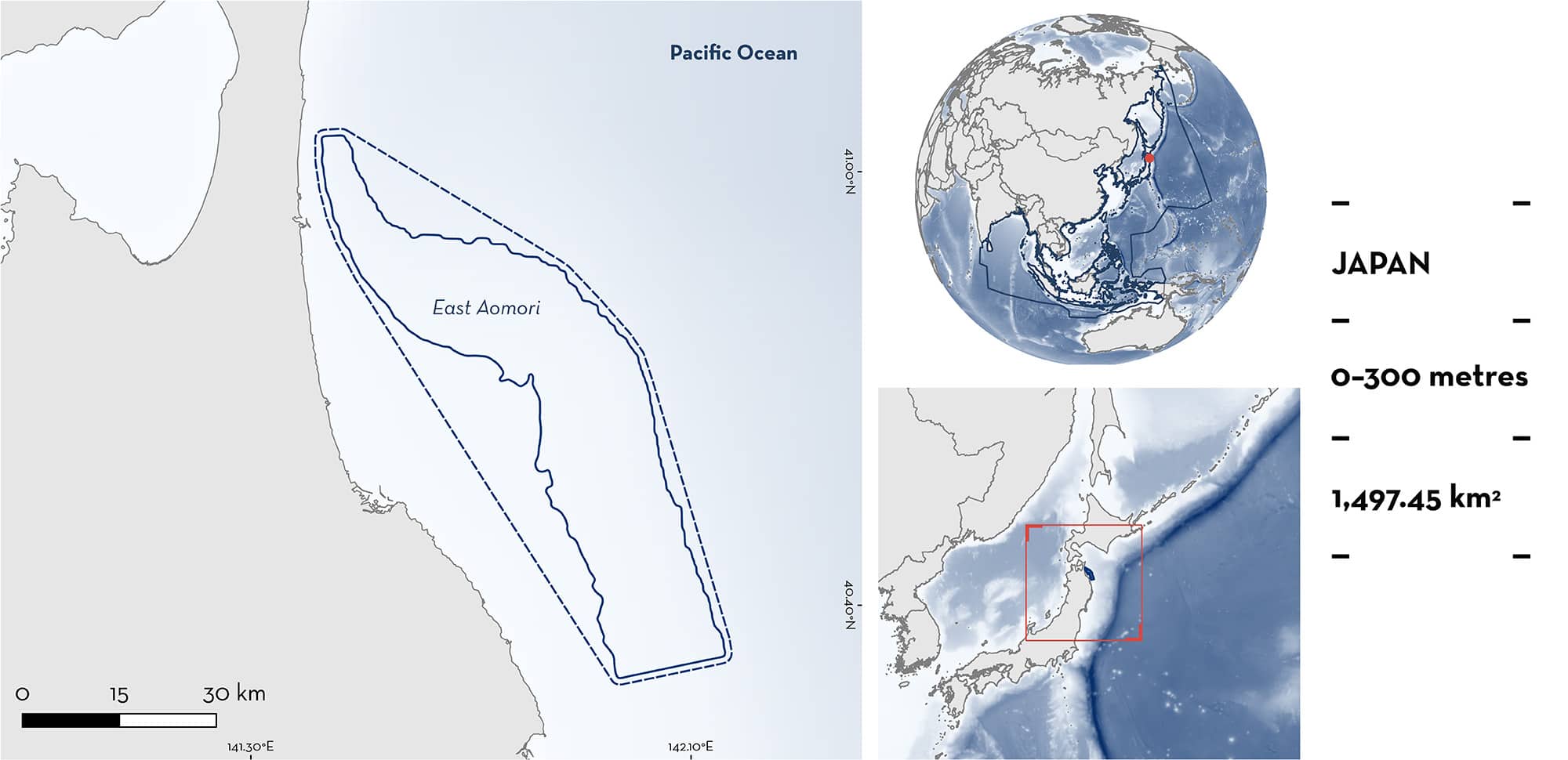ISRA FACTSHEETS
ISRA FACTSHEETS
ASIA REGION
East Aomori
Summary
East Aomori is located on the east coast of Honshu Island, south of the Tsugaru Strait mouth in Japan. The area encompasses part of the Oyashio shelf region and is influenced by the mixing of the Oyashio Current, the Kuroshio Current, and the Tsugaru Current producing complex oceanographic features and high productivity. The habitat is characterised by a rich biota comprising warm-water and cold-water species. This area overlaps with the Sanriku Coast and Matsumaekojima Key Biodiversity Area and two Ecologically or Biologically Significant Marine Areas. Within this area there are: reproductive areas (North Pacific Spiny Dogfish Squalus suckleyi).
Download factsheet
East Aomori
DESCRIPTION OF HABITAT
East Aomori is located off the east coast of Honshu Island, south of the Tsugaru Strait mouth within the east coast of Aomori Prefecture of Japan. The area encompasses part of the Oyashio shelf region and is influenced by the mixing of the Oyashio Current (cold current), the Kuroshio Current (warm current), and the Tsugaru Current (warm current) (Sakurai 2007). As a result, there are large quantities of nutrients in the euphotic zone of this area, especially during the boreal spring (March–May) and a unique biota comprising both warm-water and cold-water species (Tittensor et al. 2015).
East Aomori overlaps with the Sanriku Coast and Matsumaekojima Key Biodiversity Area (KBA 2024), and the Northeastern Honshu Ecologically or Biologically Significant Marine Area (EBSA) and the Convection Zone East of Honshu EBSA (CBD 2024a, 2024b).
This Important Shark and Ray Area is benthopelagic and is delineated from inshore and surface waters (0 m) to 300 m based on the depth range of the Qualifying Species in the area.
CRITERION C
SUB-CRITERION C1 – REPRODUCTIVE AREAS
East Aomori is an important reproductive area for one shark species.
The area has a large proportion of neonate and young-of-the-year (YOY) North Pacific Spiny Dogfish. Between 2013–2015, ~212 neonate and YOY North Pacific Spiny Dogfish were captured within the area. Surveyed months were October 2013, April and June 2014, and June and October 2015 during a dedicated research effort on the offshore benthic trawl fishery by the Fisheries Resources Institute of the Japan Fisheries Research and Education Agency (Yano et al. 2023).
A total of 242 (120 males, 122 females) North Pacific Spiny Dogfish were captured during these surveys, with neonates and YOY representing ~88% of the individuals, ranging in size from 15–30 cm precaudal length (from tip of the snout to dorsal precaudal notch) with umbilical scars present (Yano et al. 2023). Size-at-birth for this species is 22–33 cm total length (TL) (Ebert et al. 2021). Neonates and YOY were observed in the area all three surveyed months with a seasonality from April to December in the broader region (Yano et al. 2023).
Furthermore, the North Pacific Spiny Dogfish represents an important fishery resource for the area and surrounding waters, having been consistently exploited for over 120 years (Yano et al. 2022). Although this species has the highest catches concentrated in the northern part of the Tohoku region, both on the Pacific Ocean and Japan Sea sides, with particularly high catches around the Tsugaru Strait in Aomori Prefecture (Yano et al. 2017, 2022, 2023), neonate and YOY North Pacific Spiny Dogfish are concentrated in this area offshore from Hachinohe City to Misawa City in depths between 150–300 m (Yano et al. 2023).
Download factsheet
SUBMIT A REQUEST
ISRA SPATIAL LAYER REQUEST
To make a request to download the ISRA Layer in either a GIS compatible Shapefile (.shp) or Google Earth compatible Keyhole Markup Language Zipped file (.kmz) please complete the following form. We will review your request and send the download details to you. We will endeavor to send you the requested files as soon as we can. However, please note that this is not an automated process, and before requests are responded to, they undergo internal review and authorization. As such, requests normally take 5–10 working days to process.
Should you have questions about the data or process, please do not hesitate to contact us.


